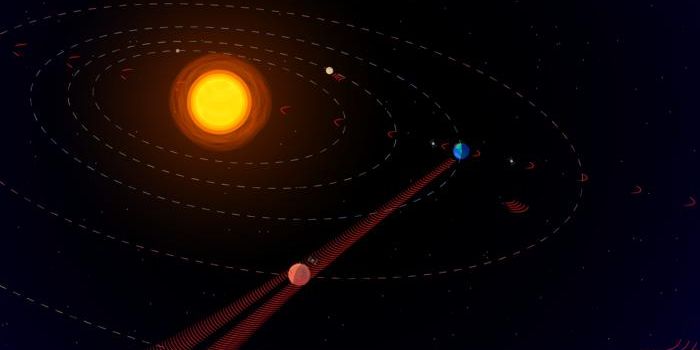JAXA's Hayabusa-2 Probe Photographs Artificial Crater
Japan’s Hayabusa-2 mission is chock-full of firsts. Upon landing on the asteroid 162173 Ryugu last September, it became the first spacecraft to deploy a duo of hopping rovers on an asteroid’s surface. More recently, however, the Hayabusa-2 mission became the first spacecraft to produce an artificial crater on an asteroid’s surface for sample collection purposes.
Before (left) and After (right). Image Credit: JAXA
Japan’s space agency commanded Hayabusa-2 to fire an explosive payload at 162173 Ryugu’s surface earlier this month. Upon exploding, the payload drove a copper projectile deep into the asteroid’s surface, which kicked up sub-surface dust and rocks that the Hayabusa-2 spacecraft can now retrieve when it returns to the surface in the future.
Perhaps unsurprisingly, the explosive left quite a mark on 162173 Ryugu. After Hayabusa-2 returned to an elevation of 1,700 meters (5,500 feet) feet above the asteroid’s surface, its cameras spotted what scientists are calling an artificial crater since it was created by something other than nature itself.
"Creating an artificial crater with an impactor and observing it in detail afterward is a world-first attempt," commented Yuichi Tsuda, the Hayabusa-2 mission’s project manager from JAXA. "This is a big success."
Related: Japan's Hayabusa-2 spacecraft lands on 162173's surface for the first time
The dark spot that was produced by the explosion measures around 20 meters across, which is twice as large as mission scientists initially expected; this might seem like an insignificant detail at first glance, but on the other hand, it actually has significant implications for 162173 Ryugu’s composition.
"We can see such a big hole a lot more clearly than expected," added mission scientist Masahiko Arakawa. "The surface is filled with boulders, but yet we created a crater this big. This could mean there's a scientific mechanism we don't know or something special about Ryugu's materials."
Related: NASA's OSIRIS-REx mission arrives safely at asteroid Bennu
Now that 162173 Ryugu’s subsurface has been regurgitated all over the asteroid’s surface, the Hayabusa-2 spacecraft can move forward with the next and perhaps the most critical phase of its mission: sample collection. Hayabusa-2 will swoop back down again in the coming weeks to collect some of the raw subsurface material so that it can be returned to Earth for analysis.
Based on that sample, mission scientists can uncover why their estimations regarding the size of the artificial crater weren’t accurate, and more importantly, learn more about a particularly exciting space rock that’s believed to have existed since the formation of the solar system.
It should be interesting to see what scientists learn after those samples return to Earth. After all, anything that could provide even the slightest clue about how and why we all got here is of particular interest to the world’s most curious minds.









